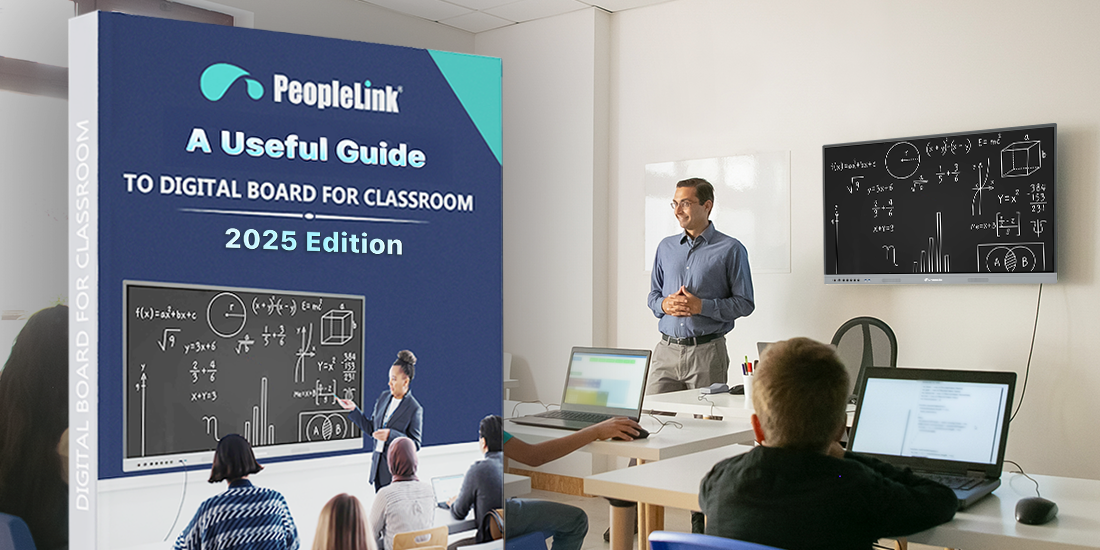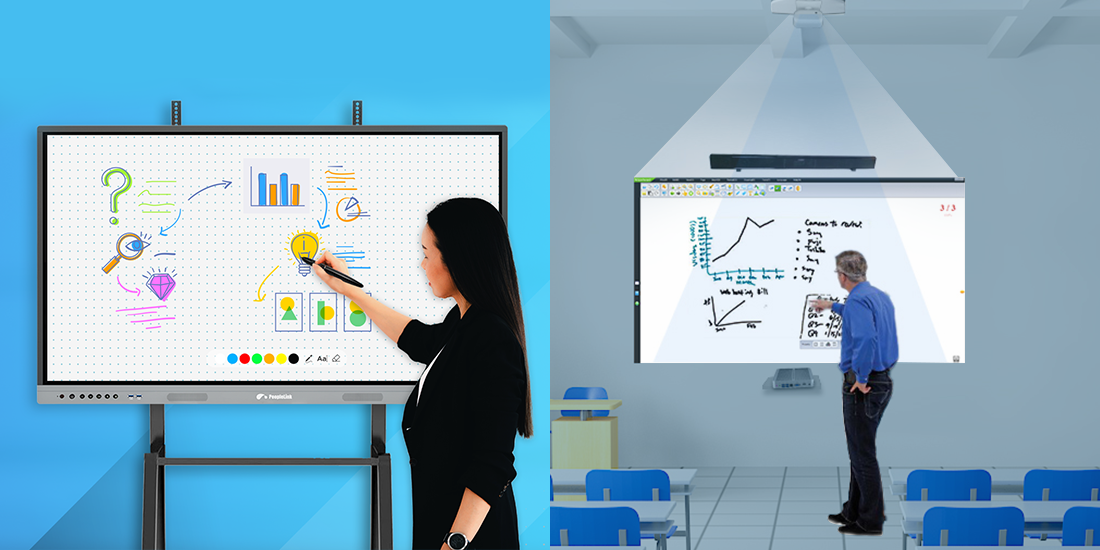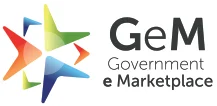A Useful Guide to Digital Board for Classroom – 2025 Edition
- August 26, 2024
- Posted by: PeopleLink
- Category: Blogs

The digital revolution has started and taken over the world. It’s transformed how we live and work together. Now, it’s on its way to impact many other things. But let’s talk about the education sector. Who would have thought that our education system would transform in such a way? All thanks to the digital tools created specifically for the education sector. Devices like digital boards for the classroom are making learning more engaging as teachers and students can now interact and share ideas in a new way. But many people don’t know much about this technology. At the same time, some are still confused about it. They think digital boards and whiteboards are the same. That’s why we’ve created this complete guide for you. PeopleLink is here to eliminate that confusion once and for all.
What is a Digital Board?
Let’s first understand what digital boards are. These interactive whiteboards are an upgrade of the old whiteboard integrated with modern technology. This makes them completely functioning whiteboards with multi-touch screens, which maximizes engagement in the class.
Top 3 Benefits of Digital Board for Classrooms
- Unlock High Student Engagement: Digital boards are not ordinary display tools for students to engage with learning materials in many ways. They can use these boards for learning or educational activities, which makes learning fascinating and engaging.
- Easy access to Mind-Blowing Resources: Most digital boards can connect to the internet. This feature opens up a whole world of possibilities for its users. They can now access a wealth of information and resources and bring them right into the classroom with a simple click.
- Quick Collaboration Made Easy: Digital boards have opened up a new world of collaboration. Many digital boards offer collaboration features that help users create a dynamic setting, which helps them do activities such as brainstorming.
Digital Boards & Traditional Boards: Which is Better?
Both digital boards and whiteboards have pros and cons. Make the best choice based on your needs and priorities.
Are you looking for a board that is more classic and affordable? Try a traditional whiteboard. Whiteboards are simple, easy to use, and reliable. You don’t need extra equipment or software to keep them working. But traditional whiteboards aren’t perfect. They have one major limitation as they lack new-age technology compared to high-tech digital boards.
This is where digital boards come in, making learning fun and engaging. They have features that most whiteboards lack, but limitations prevail, too. You see, this board is technology-driven. Thus, only some people are comfortable using it. They need some help and practice to get the hang of using these digital boards.
Best Types of Digital Board for Classroom
Digital board for classrooms come in a variety. They all come in different sizes and colors. But we’ve simplified them into two categories:
- Interactive Digital Display: Whiteboards have a built-in computer, so there’s no need to get a separate one. With a click, you can connect your classroom to the internet, and then you can access many online resources.
- Projector-Based Digital Board: These boards use a projector to display images on a whiteboard. They also have sensors that track your finger or stylus movements. These sensors let you touch, drag, and move things on the projected image. They also let you highlight things—just like with a regular whiteboard.

How to Choose the Best Digital Board For The Classroom
Picking the right digital board for the classroom is a big decision. Before you choose a digital board, you must clarify your needs, as they will greatly affect your buying decisions. Here are some simple questions to start: How much is your budget? How big is your classroom? What is your teaching style? How comfortable are you with using technology?
Here are some of the features you must look for:
- Display Size: Before you choose a digital board, you must clarify the right display size. It matters a lot because it dictates whether students can see the content. For example, if your classroom is large, you will need a board with a large screen size.
- Display Resolution: It’s one thing that you have the right display size for your classroom. It’s a whole other thing and its resolution matches. The proper resolution matters a lot because it dictates whether the content looks clear or not.
- Touch Technology: Before you choose a digital board, you must clarify its touch tech. Make sure it has advanced touch technology. This means it’s supposed to work well when you touch the screen with your finger or a stylus. It’s supposed to work without any delays or mistakes as there are separate 20 touch points which helps in uniformity too.
- Software Compatibility: Before choosing a digital board, you must clarify whether it works with your software. This compatibility is essential because it will make Android and OS users’ lives easier. They can run all the computer programs, open files, and display documents.
Final Perspective
You’ve made it to the end of our guide on digital boards for classrooms in 2025. In this article, we’ve covered a lot of things. First, we talked about the basics of digital boards, including what they are and their key benefits. Then, we compared digital boards with traditional boards. After that, we discussed the best types of digital boards and how to choose the right one for you. Now that you have this knowledge, you’re all set to pick the perfect digital board that fits your needs. If you want to learn more, check out our blog page on the PeopleLink website.




